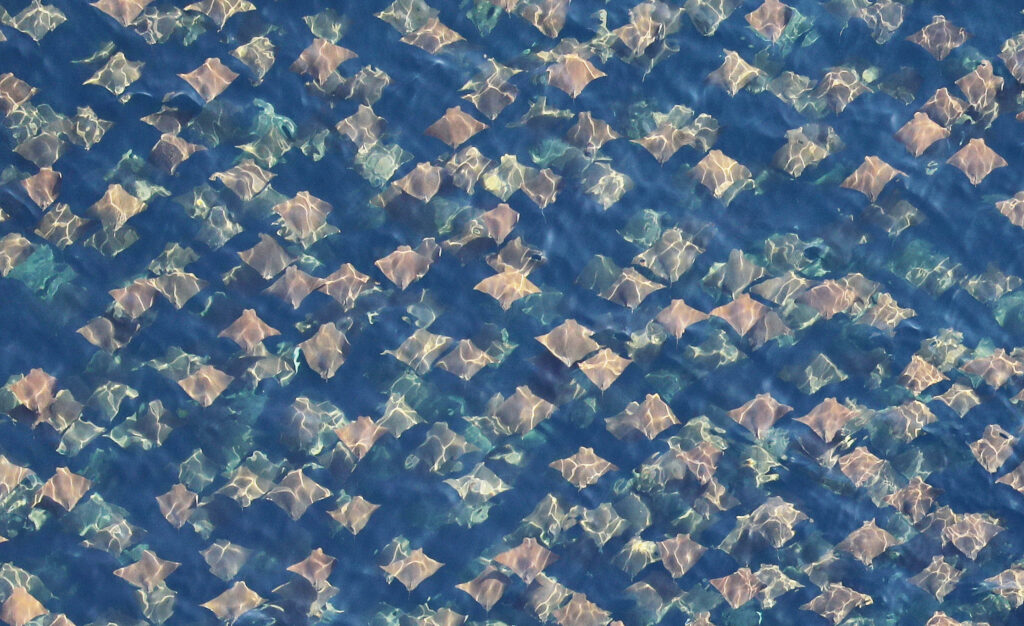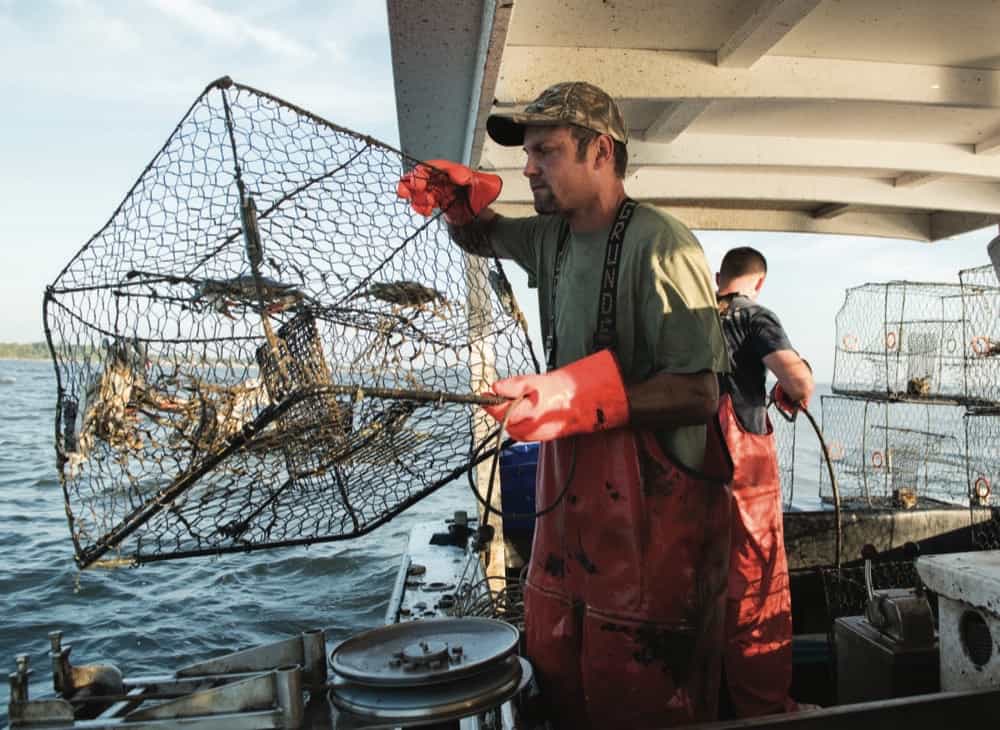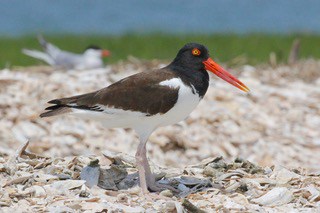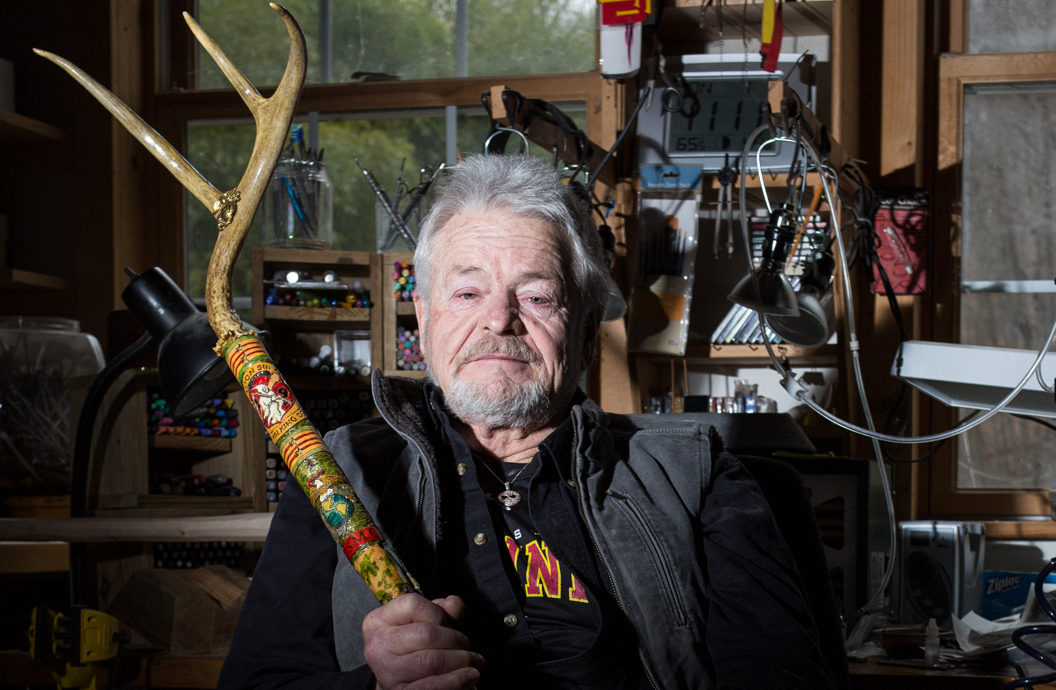Around the Chesapeake, we get used to seasonal comings and going—ospreys leaving around Labor Day for their “other summer” in Central and South America, and tundra swans arriving from Alaska’s North Slope between Thanksgiving and Christmas. Two scientists have been researching the remarkable migrations of the cownose rays that birth their pups, breed and feed here in summer. As to where they go in the wintertime, these scientists have solved the mystery using a telemetric network that spans the full length of the Atlantic seaboard.
Matt Ogburn is a marine fisheries ecologist at the Smithsonian Environmental Research Center (SERC) on the Rhode River in Edgewater, Md., and Robert Fisher is an ichthyologist at the Virginia Institute of Marine Science (VIMS) on the York River at Gloucester Point. The Maryland Department of Natural Resources (DNR) is also interested in cownose ray migration, to the point of developing a management plan for the species.
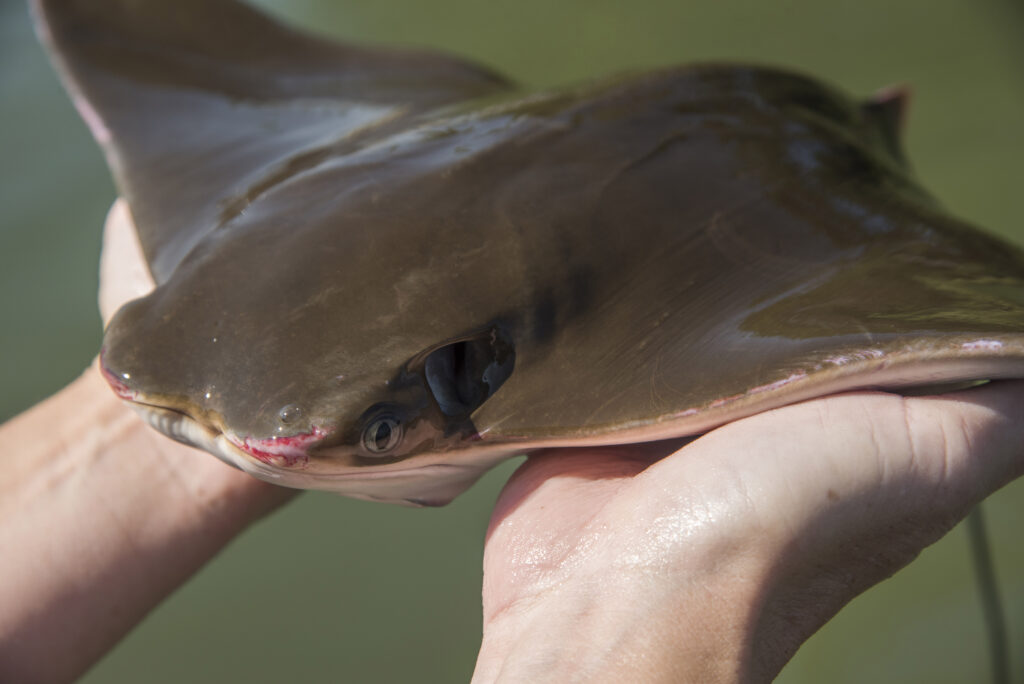
Compared with other species of fish, cownose rays are enigmatic, even weird to most of us. Like their cousins, the sharks, they have cartilage for skeletons instead of bone, with compressed bodies (“flat shark” is an apt description). They swim by “flapping” their powerful, enlarged pectoral fins instead of their tails, which are long and cord-like. The tails are harmless, but cownose rays grow one or two sharp, barbed spines covered with a mucus of localized, pain-inducing poison at the bases of their tails for defense. Captain John Smith famously “sported himself” by spearing fish with his sword on a shallow bar at the mouth of the Rappahannock in the summer of 1608.
He made the mistake of impaling a ray, which repaid the insult with its own weapon, causing him such great pain that he thought he was going to die. When the expedition’s doctor applied a “precious oil,” the pain subsided and Smith “ate of the fish to his supper.” The incident’s location, of course, is immortalized as Stingray Point, at the east end of Deltaville, Virginia.
That story and the general designation of “stingray” give cownose rays a fearsome image, and the seemingly uncontrollable panic of a ray hooked by mistake and beating its wings at boatside has turned many people away from them. Watermen fishing pound nets find them obnoxious nuisances that must be released while harvesting other, more “normal” fish species. At one time, the rays were wrongly accused of destroying oyster restoration reefs and on-bottom aquaculture operations. During this period, some fishermen began shooting surface-swimming rays with hunting bows and arrows. Tournaments killed large numbers, which participants simply threw away. The waste sparked public outrage, which led to concern at Maryland’s DNR, the beginning of the management plan, and more studies at SERC and VIMS.
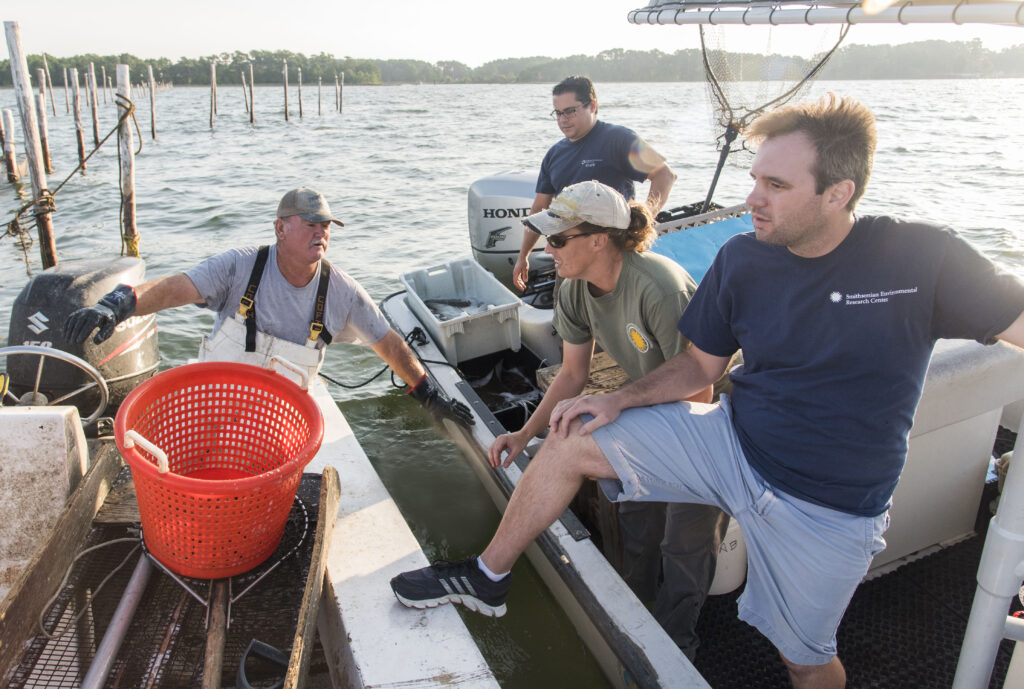
The rays’ negative image begins to fall apart as we study them. Their mouths lie underneath their heads, with teeth fused into two rectangular, rounded blocks for grinding prey. Most often, they feed either by sucking up critters like mud crabs they find on the Bay’s bottom or by dislodging critters in the sediment like soft-shell clams and worms by flapping their wings hard and drawing water in through their gill openings to spurt out of their mouths at high pressure. There is some evidence that this agitation (or cultivation) improves the diversity of critters like mud crabs and worms in Bay bottom communities.
Despite their strange (to us) appearance and fearsome spines, cownose rays are strikingly adapted to fit their lifestyle. Watch one swimming gracefully in an aquarium tank and you may even decide it’s beautiful. They are also exciting to catch when hooked unexpectedly on rod and reel, easily as powerful and fast as more conventional game fish, and tasty when prepared correctly, as the recipe in the Boat Show issue of Chesapeake Bay Magazine described. Handling one at boatside is not rocket science. Simply control it in a net, remove the hook from its mouth with pliers (if you’re releasing it), or whack it between the eyes if harvesting, and remove the spine with the pliers. For more recipes for cownose rays (fifteen, no less), visit the Virginia Marine Products Board website, virginiaseafood.org.
So, what’s the mystery about migration? Over three years, Matt Ogburn and his team worked with watermen fishing pound nets and deployed longlines from SERC’s research vessel to catch cownose rays and insert radio-tracking devices in their bellies. Each ray’s device emits its own code. SERC is a member (actually, the managing institution) of the Atlantic Cooperative Telemetry Network, in which about 150 researchers from Maine to Florida maintain and share data from some 5,000 receivers along the coast that pick up signals from any tagged animals passing within 500 yards.
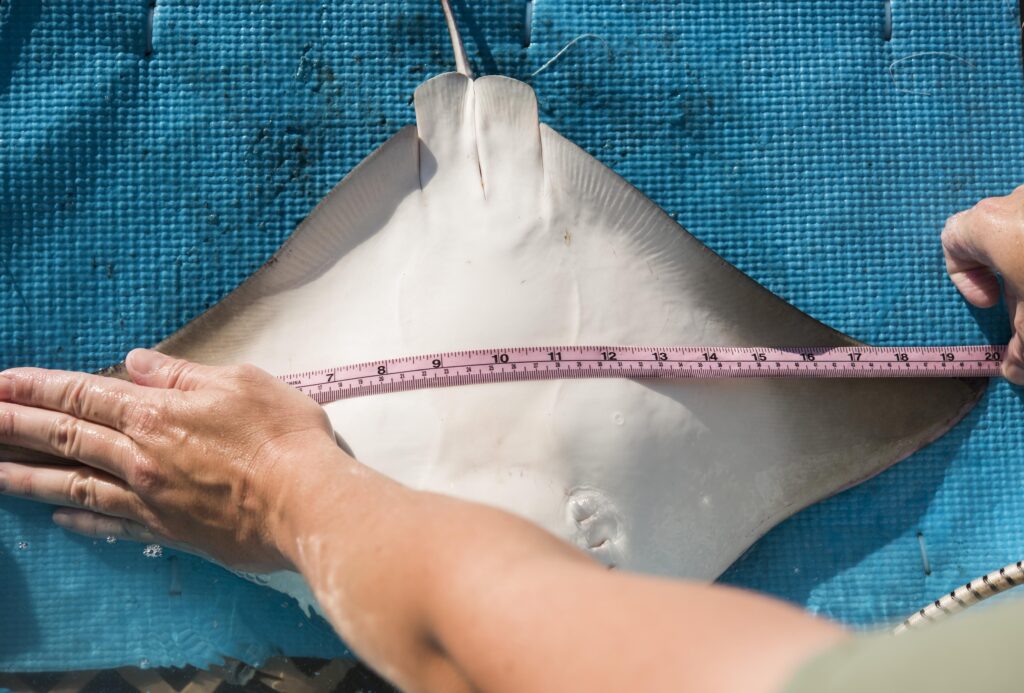
The SERC study of 51 rays (38 female, 13 male) indicate that “our” rays winter together in the Atlantic off Cape Canaveral, Florida. As the water warms in early June, large (up to 36 inches across) female cownose rays—many of which are pregnant—swim north to the Chesapeake. Their arrival date varies from year to year, according to the sea surface temperature. Our shallow, rich waters allow these rays to give birth to their pups, which are about 12″ wide and fully formed when they’re born, in relative safety from the large oceanic sharks that are their main predators. The ray pups are immediately able to begin foraging on the Chesapeake’s small soft clams. These female rays mature at six to eight years of age and can live for 30 to 35, but each produces only a single pup per year. Part of the concern about excessive harvest is that with their slow growth and maturation with low birth rate, it would be easy to fish them down. For the same reasons, recovery would be painfully slow even with protection.
Several weeks after the pups are born, the smaller males arrive, apparently prompted to migrate by length of daylight or some other fixed environmental cue instead of temperature. With the pups out on their own, the raucous mating season begins as males and females swim together. By July, the females are pregnant all over again. They continue to forage for the summer, exploring farther up the Bay and its rivers in search of feeding grounds. Some of the tagged rays even swim through the C&D Canal into Delaware Bay.
So, what’s next for cownose ray research? Matt Ogburn wants to learn more about the effects of bottom “cultivation,” to discover whether it is beneficial to those communities that are so critical to a healthy Chesapeake food web. He’s still interested in developing a management plan in Maryland and will continue to mine the data from the ACT Network to learn more details of the migrations this long-lived species undertakes.
For the rest of us, the evolving story of cownose ray migration is just one more reason to appreciate them as remarkable members of the Chesapeake community. Here’s hoping that our “snowbird” rays are comfortable and well fed in their winter digs off Cape Canaveral.
Editor at Large John Page Williams is a fishing guide, educator, author and naturalist, saving the Bay since 1973.

